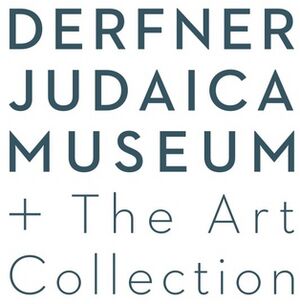Derfner Judaica Museum facts for kids
 |
|
| Lua error in Module:Location_map at line 420: attempt to index field 'wikibase' (a nil value). | |
| Established | 1982 |
|---|---|
| Public transit access | Metro-North Railroad: Hudson Line at Riverdale New York City Subway: New York City Bus: Bx9 Bee-Line Bus System: BL1, BL2, BL3 |
The Derfner Judaica Museum is a special place. It is a cultural and educational center. Here, you can see exhibitions about Jewish history. You can also learn about modern Jewish culture. The museum is in the Jacob Reingold Pavilion. This building is on the grounds of RiverSpring Living. RiverSpring Living used to be called The Hebrew Home at Riverdale. It is located in the Riverdale neighborhood. This area is in the Bronx in New York City.
Contents
History of the Museum
The Judaica Museum started in 1982. Ralph and Leuba Baum, who lived in Riverdale, gave their collection to the Home. Their collection was of Jewish ceremonial art. Ralph Baum (1907–1984) had to leave his home because of Nazi persecution. He and his wife, Leuba (who passed away in 1997), wanted to save memories. They wanted to pass on the stories of the objects they collected. Most of these objects were used by Jewish people in Europe. This was before the Holocaust.
New Name and Location
In 2008, the Judaica Museum was given a new name. It was named after Helen and Harold Derfner. They were important supporters of the museum. The Derfner Judaica Museum moved to a new space. This happened on June 11, 2009. The new space was funded by the New York City Department of Cultural Affairs. People really liked the new museum.
The architect Louise Braverman designed the museum. It has a large exhibition space. This space is about 5,000 square feet (465 square meters). It is in the Jacob Reingold Pavilion. The museum is a main spot for many programs. These programs are for residents of the Hebrew Home and for the public. There is also another exhibition space nearby. It is called the Elma and Milton A. Gilbert Pavilion Gallery.
Exhibitions and Collections
The first exhibition was called Tradition and Remembrance: Treasures of the Derfner Judaica Museum. It showed how Jewish history and memory are connected. The exhibition told the stories of objects. These objects were used in traditional Jewish practices. It showed how memory helps shape who we are. It also showed how it shapes groups of people.
Featured Objects and Art
Some special objects were shown in the exhibition. One was a silver filigree vase from around 1911. Another was an old copper Hanukkah lamp. These came from the famous Bezalel Academy of Art and Design. This school was started in Jerusalem in 1906. Artists from the Bezalel school mixed different styles. They used ideas from their surroundings, old traditions, and new ideas. Their art often showed themes from the Bible. It also used Islamic designs and European traditions. They wanted to create a unique Jewish art style. This was for the new nation they hoped to build.
Other objects in the museum show Jewish practices. They come from many places. For example, there is an 18th-century set of German Torah tools. These are from Meerholz, Germany. There is also a velvet matzah cover. It has fish-scale embroidery. This cover is from Jerusalem from the early 1900s.
Rotating Shows and Unique Displays
The museum has about 1,000 objects in its collection. It often changes its exhibits. It also shows Jewish art and items from other collections. These can be from private owners, other museums, or art schools. One interesting exhibition was called "Culture as Commodity." It showed many Jewish-related items. These included Israeli Coca-Cola T-shirts. These items were bought from eBay and other online auction sites.
The Art Collection at RiverSpring Living
The Hebrew Home at Riverdale also has a large art collection. It is called The Art Collection at The Hebrew Home at Riverdale. This collection has over 4,500 paintings, prints, photographs, and sculptures. It includes modern works by artists like Alex Katz, Ben Shahn, and Andy Warhol. It also has Native American ceremonial art and African sculptures. The museum often changes these exhibitions. They show works by both famous and new artists. The grounds of the Home also have an outdoor sculpture garden. This is one of the few in New York City. New art exhibitions are put up every 6 to 8 weeks.

